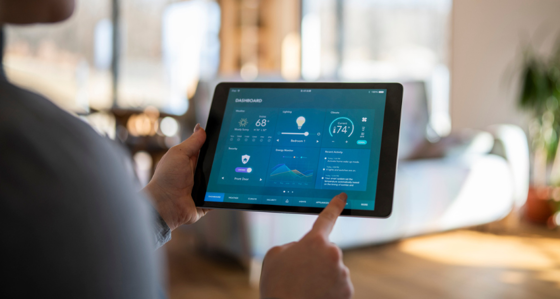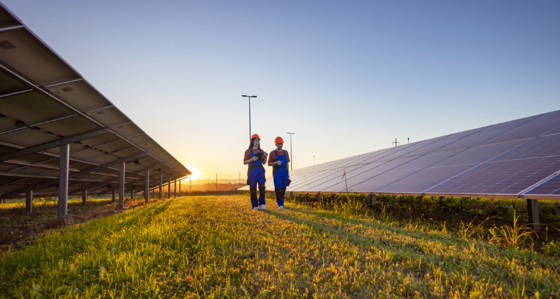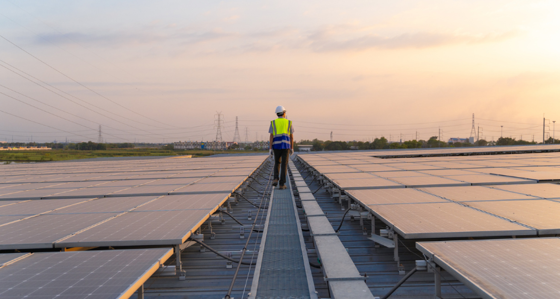
Cop 26: How will Australia gain from net zero?
30 November 2021
All eyes have been on COP26, particularly on the extent to which countries have increased their existing emissions reduction targets. Baringa has provided plenty of coverage of COP26, including this excellent summary by Caspian Conran.
In Australia, many observers have been disappointed by the Federal Government not increasing our emissions reduction target beyond the current 2030 target of 26-28% below 2005 levels.
The last day of COP26 coincided with the Federal Government’s release of its economic modelling on the benefits to Australia of achieving net zero emissions by 2050 (also known as Australia’s Long-Term Emissions Reduction Plan). The Government’s net zero announcement and its economic modelling can be viewed with both a glass half-full and half-empty perspective. A half-full perspective is that Australia does need the Federal Government to commit to net zero before we can get there. While the breadth of net zero announcements by State Governments is much needed, Federal Government ‘buy in’ is critical to Australia’s ability to achieve net zero. Previously, the Federal Government considered it "preferable" to reach net zero by 2050. It is now an explicit commitment, though remains unlikely to be legislated at least prior to the next Federal election.
The Government’s modelling says we can achieve 85% of the emissions reductions required for net zero by 2050, by purchasing offsets and by achieving the cost targets for technologies such as clean hydrogen, energy storage, and solar PV, amongst the other technologies noted in the Government’s Technology Investment Roadmap. The remaining 15% of emissions reductions require technology cost reductions further to what’s in the Government’s Roadmap. The modelling also shows achieving net zero by 2050 would cost just $25 more (provided those technology cost breakthroughs occur) vs. achieving 85% of the emissions reductions.
Those with a glass half-empty view would argue it is internally inconsistent for the Government’s modelling to apply the benefits of a 3% lower cost of capital from achieving net zero by 2050 but then show that net zero would not be achieved without further technology cost breakthroughs.
When we step back from the details one thing is very clear from the Government’s modelling: Australia collectively stands to gain far more from net zero than what it may lose. This is an important and under-appreciated aspect of the Government’s analysis, and while it is consistent with what many others have been saying for quite a long time, it is a remarkable finding given the toll wrought by Australia’s ‘climate wars’ over the past one-and-half decades.
How can Australia’s energy sector mitigate the risks and realise the opportunities provided by net zero?
Determining the benefits and costs of decarbonisation is also integral to the climate risk advice we provide to our clients, both in Australia and internationally. Australian energy sector businesses have increasingly sought to improve the measurement of their climate risk as a pre-requisite to managing those risks.
While ‘risk’ is often viewed in the negative – reduction in the value of fossil fuel assets from consumers preferencing goods and services produced with clean energy and/or from extreme weather events – ‘risk’ also speaks to the opportunities from climate change, especially to those same fossil fuel businesses. These opportunities include tapping into the international and domestic demand for our raw materials and manufactured goods needed in an increasingly green, electrified world:
- commodities such as iron ore to make steel for renewable generation technologies, as well as ‘rare earths’ such as lithium to make batteries
- natural gas and clean hydrogen to reduce the emissions-intensity of various production and consumption processes, including power generation, other heavy industry, and transport.
Baringa has been assisting electricity sector businesses to understand what net zero means for them, and has developed a net zero scenario within our quarterly power market report. At a sectoral level, the strongest decarbonisation has come from Australia’s power generation sector, driven by State-based renewable energy targets and also by energy consumers seeking to procure clean energy.
While the decarbonisation of Australia’s power sector is an impressive and much-needed development, it alone cannot achieve net zero for Australia as a whole, and so raises questions about the abatement contribution needed from other sectors. Businesses operating in these other sectors – which include the Oil & Gas, and Metals & Mining– also need to understand their climate risks, both opportunities and threats.
As such, a key objective of Baringa’s Energy Climate Risk offering is helping businesses better understand climate risk measurement and incorporate strategies to minimise the threats and capture the opportunities from climate change, especially those businesses that are outside the power sector. This is being done by supporting the increasing number of Australian energy businesses that have signed up to the Task Force on Climate-Related Financial Disclosures (TCFD) framework. Our Climate Risk offering leverages two existing strengths and offerings: our Climate Risk practice for our FS clients and our Australian energy practice.
Contact us for support on developing and implementing a decarbonisation roadmap to meet your energy business’ emissions reduction commitments.
Related Insights

Not net zero: Reframing the case for energy efficiency
The retrofit conversation needs to shift beyond net zero. It's a significant economic opportunity for GB PLC.
Read more
Dissecting the REMA decision
Three years in the making, the Review of Electricity Market Arrangements (REMA) decision has now been published: the UK Government has decided to retain the national wholesale price.
Read more
What might a reformed GB national power market look like under REMA?
Discover how a reformed national market is likely to include significant changes to current market arrangements, with material impacts for market participants.
Read more
Investing in uncertainty: European power market outlook 2025
Our latest outlook points to a more uncertain energy transition, shaped by political and economic volatility across Europe in the form of Trade Wars, Populism and Remilitarisation.
Read moreIs digital and AI delivering what your business needs?
Digital and AI can solve your toughest challenges and elevate your business performance. But success isn’t always straightforward. Where can you unlock opportunity? And what does it take to set the foundation for lasting success?